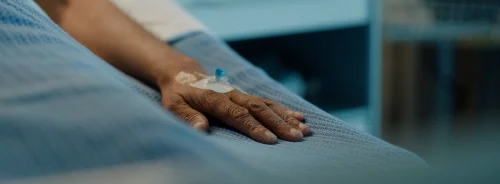ICU Management & Practice, ICU Volume 6 - Issue 2 - Summer 2006
Authors
Gilberto Alonso Fernández, M.D.
Regional Chief. Catalan
Emergency Medical System
Fernando García Alfranca, M.D.
Director. Catalan
Emergency Medical System
Antonio Artigas Raventós, M.D, Ph. D.
Director. Critical Care Department
Sabadell Hospital, Spain
The Catalan Medical Emergency System (SEM) is thirty years old. Demographic and socio-economical changes, as well as improvement in emergency medicine and in new technologies, demand some changes to the SEM to face the future.
Introduction
Located on in the northeast of Spain, Catalonia has a surface area of 32,000 square kilometres and a population of about 7 million people, 60% of which live in or around the capital, Barcelona. The Catalan public health system integrates all resources, public and private, in a unique net of public utility and universal access.
Historical Development of Pre-Hospital
Care in Catalonia
Pre-hospital medicine in Spain began about mid-decade in the nineteen-eighties. Before that, except for some unique cases, this service was covered by local or Spanish Red Cross basic ambulances.
In 1986, the Catalan Government, through its Health and Social Security Department, created the Sistema de Coordinació d’Emergències Mèdiques de Catalunya (SCEM), or Catalan Medical Emergency Coordination System, which coordinates secondary medical transport. Towards the end of 1987, they launched primary assistance and transportation plans, which developed into the present Sistema d’Emergències Mèdiques (SEM), or the Medical Emergency System. At the same time, Barcelona’s Town Council created the Servicio de Atención Médica Urgente (SAMU), or Urgent Medical Care System, which provides primary medical response, with the aid of a nursing staff. SAMU also takes care of the Spanish national medical emergency telephone number, 061, and soon after its inception became the Servicio Coordinador de Urgencias de Barcelona-061 (SCUBSA-061), or the Barcelona-061 Emergency Coordination Service. As a result, SAMU experienced increasing medicalisation of its formerly nurse-equipped units. In January 2005, SEM and SCUBSA-061 joined to forma single coordination and pre-hospital care service, which now covers the whole of the Catalan territory, under the name of SEM.
Present Situation
At present, SEM has a single telephone line (061) for urgent and emergency healthcare. In addition, the service has two other numbers for specific purposes: one is used for secondary (inter-hospital) transport; the other one, Sanitat Respon (Health Service Answers), answers general inquiries on health topics.
The Catalan system for medical emergencies combines two models, which affect medical as well as response issues. One of the models covers the city of Barcelona, and the other one covers the rest of Catalonia. The city of Barcelona has an extra-hospital medical model and a wide range of response possibilities: Basic Health Units (USVB), equipped with technicians; Intermediate Health Units (USVI), with nursing staff and Advanced Health Units (USVA), with a doctor. The rest of Catalonia follows a hospital medical model, with a response mechanism in two consecutive stages, basic and advanced. The basic stage is not directly controlled by SEM. Inter-hospital transfer of critical or potentially critically ill patients is made by Advanced Vital Support Units (USVAs), with the assistance of hospital paediatricians for paediatric cases. The advanced stage incorporates a doctor and a nurse in the emergency response.
SEM and the hospitals in the area of Barcelona have developed a protocol for some of the prevalent, timedepending pathologies: serious trauma, acute coronary syndrome (pre-hospital fibrinolysis), stroke, intoxication cardiorespiratory arrest (including donor at cardiac arrest). These protocols have contributed to the continuity of service, while granting homogeneous pre-hospital and hospital care in service areas that border or overlap.
Future
Accumulated experience in coordination and management of both models helped us decide on the most convenient one for the future. The polyvalent Barcelona model will be extended to the rest of Catalonia, maintaining the two-stage response in rural areas only, where all medical response units will be indiscriminately used for both primary and secondary transportation. Telemedicine will be used as a support tool in transportation of potentially critical cases, by means of USVIs. The medical decisions that can be made using telemedicine will help us lighten the demand for and make more efficient use of the more advanced USVAs.
In addition, a unique coordination centre will manage all public health resources and will respond to all demands for urgent and emergency care, granting a more homogeneous and integral response throughout the whole territory of Catalan. The efficiency of the present medical regulation model will be increased by shared decisionmaking and quality control computer systems. In conclusion, we believe that, by combining existing elements of Catalan’s two emergency medical service models, we can improve emergency response throughout the region.





